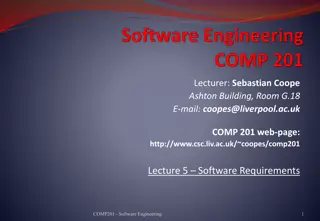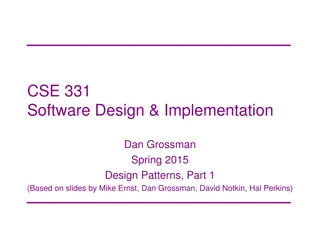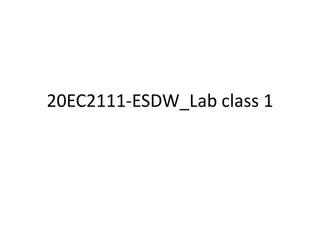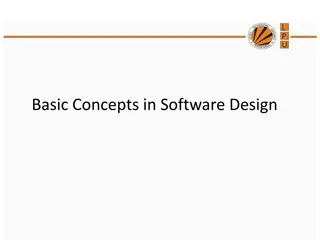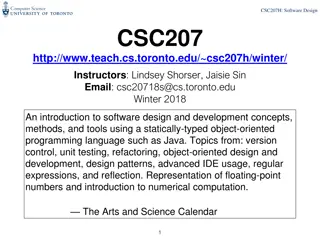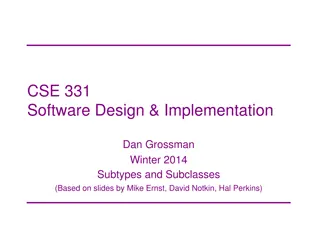CSE 331 Software Design & Implementation - Fall 2014 Overview
This content provides information on the CSE 331 course in Fall 2014, including details on the final exam, course evaluations, course goals, special features, and acknowledgments. It covers topics such as software design, correctness, program specifications, principles of design and development, and verification methods.
Download Presentation

Please find below an Image/Link to download the presentation.
The content on the website is provided AS IS for your information and personal use only. It may not be sold, licensed, or shared on other websites without obtaining consent from the author.If you encounter any issues during the download, it is possible that the publisher has removed the file from their server.
You are allowed to download the files provided on this website for personal or commercial use, subject to the condition that they are used lawfully. All files are the property of their respective owners.
The content on the website is provided AS IS for your information and personal use only. It may not be sold, licensed, or shared on other websites without obtaining consent from the author.
E N D
Presentation Transcript
DATA COMMUNICATION PRINCIPLES : Use of REJ and SREJ
Use of REJ and SREJ REJ and SREJ are negative acknowledgement or NAK packets. They are used to report that the packet number mentioned was not received and instead a higher sequence number may have arrived. REJ is used with go- back-N ARQ, while SREJ with selective reject ARQ. After receiving an REJ frame the transmitter retransmits all packets starting with the sequence number of the packet that was lost or was in error. In the example of stations A and B, suppose that A has transmitted frame numbers 2, 3, 4, 5 and is waiting for an ACK. I-frame number 3 is lost and B gets number 4 after number 2. On receiving packet number 4, the station B will send REJ3 indicating that it is expecting packet number 3 and above. B will not receive frames #4 and above until it has received #3. On receiving REJ3, station A will send packet number 3, 4 and 5 again. In case of SREJ, only the rejected packet number is to be retransmitted. In the above example, if A sends packet numbers 2, 3, 4 and 5 and if number 3 is lost then B will send SREJ3 on receiving packet number 4. However, it will not discard packets numbered 4 and above even if they arrive before the correct reception of #3. On receiving SREJ3, station A will retransmit packet number 3 only. On receiving packet number 3, station B can acknowledge all packets numbered 2 through 5 and send an ACK for packet number 6.
Out of the three operation modes (NRM, ARM and ABM) the ABM is mostly used in modern networks. This is because it allows any station to initiate or terminate a connection. LAP-B, a subset of HDLC that uses only the ABM has been specified for X.25, a public packet switched network. LAP-B stands for link access procedures balanced and is also specified for bearer data channels in ISDN. An amended and upgraded version of HDLC called LAP-D (link access procedures for channel D) is specified for control channel (D) of the ISDN. HDLC has dominated the scene for medium speed serial communications links. With the advent of optical networks, channel reliability and data transmission speeds have jumped several orders of magnitude. The next example protocol (ATM) is specified keeping in view optical networks. Due to a lack of mass market for SONET/SDH data rates, ATM has been made available for existing, slower networks as well.
REFERENCES Ahmad A. - Data Communication Principles. For Fixed and Wireless Networks Cornelius T. Leondes - Database and Data Communication Network Systems, Three-Volume Set_..-Academic Press




